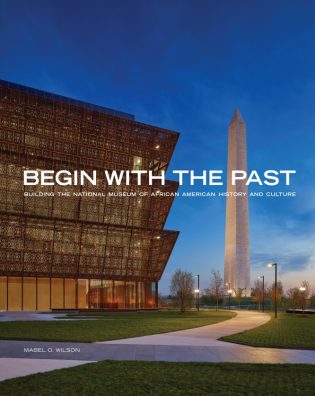To commemorate the opening of the Smithsonian’s National Museum of African American History and Culture three new books have been released by Smithsonian Books: Dream a World Anew: The African American Experience and the Shaping of America; Begin with the Past: Building the National Museum of African American History and Culture; and National Museum of African American History and Culture: A Souvenir Book. Each book will be available in the museum store beginning with the museum’s opening on Sept. 24. On Sept. 27 the books will be widely available elsewhere.
 Dream a World Anew: The African American Experience and the Shaping of America uses objects and stories from the museum to examine the African American experience. It presents a sweeping history that includes the path from slavery to freedom, the struggle during Reconstruction and the civil rights movement, and the swell of major social, political and economic changes since 1968. The book also celebrates the achievements of extraordinary black musicians, writers, performers, athletes and artists who influenced American cultural identity.
Dream a World Anew: The African American Experience and the Shaping of America uses objects and stories from the museum to examine the African American experience. It presents a sweeping history that includes the path from slavery to freedom, the struggle during Reconstruction and the civil rights movement, and the swell of major social, political and economic changes since 1968. The book also celebrates the achievements of extraordinary black musicians, writers, performers, athletes and artists who influenced American cultural identity.

Begin with the Past: Building the National Museum of African American History and Culture presents the long history of efforts to build a permanent place to collect, study and present African American history and culture. It traces the appointment of the director, the selection of the site and the process of conceiving, designing and constructing a public monument to the achievements and contributions of African Americans.
 National Museum of African American History and Culture: A Souvenir Book showcases the treasures of the museum’s collections. Highlights include a silk lace-and-linen shawl given to Harriet Tubman by Queen Victoria, Pullman Porter train cars and uniforms, the jacket and skirt worn by Marian Anderson for her 1939 Lincoln Memorial concert, Negro League baseball banners and jerseys, a Tuskegee Airman flight jacket and Chuck Berry’s Cadillac. All of these objects and many more are accompanied by captions explaining their significance and role in the nation’s history.
National Museum of African American History and Culture: A Souvenir Book showcases the treasures of the museum’s collections. Highlights include a silk lace-and-linen shawl given to Harriet Tubman by Queen Victoria, Pullman Porter train cars and uniforms, the jacket and skirt worn by Marian Anderson for her 1939 Lincoln Memorial concert, Negro League baseball banners and jerseys, a Tuskegee Airman flight jacket and Chuck Berry’s Cadillac. All of these objects and many more are accompanied by captions explaining their significance and role in the nation’s history.





